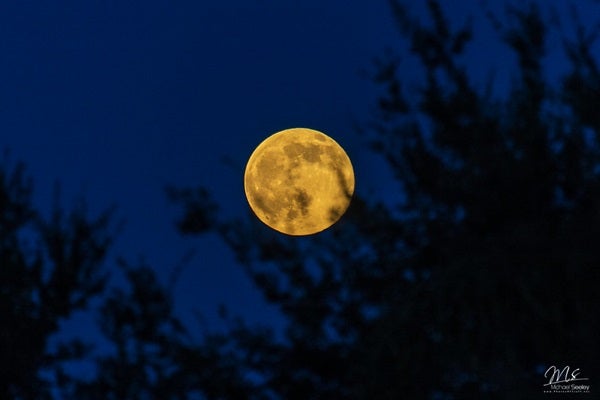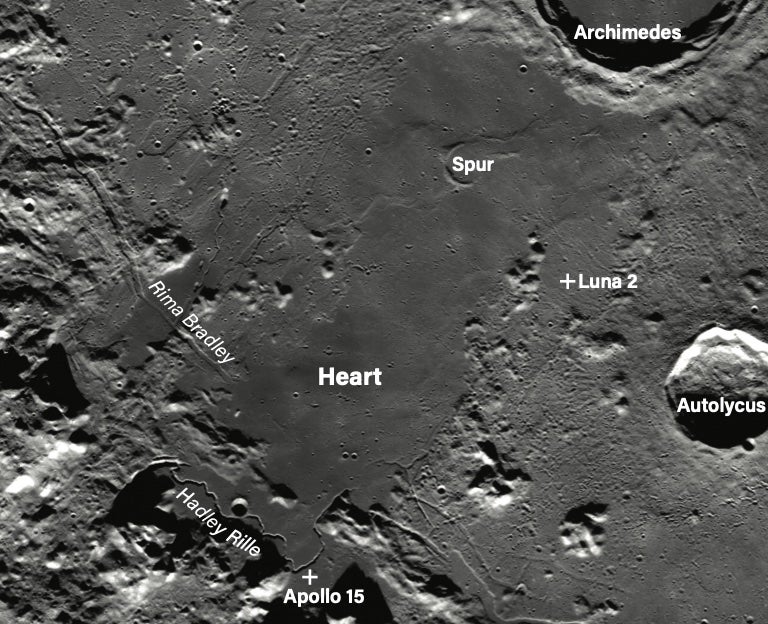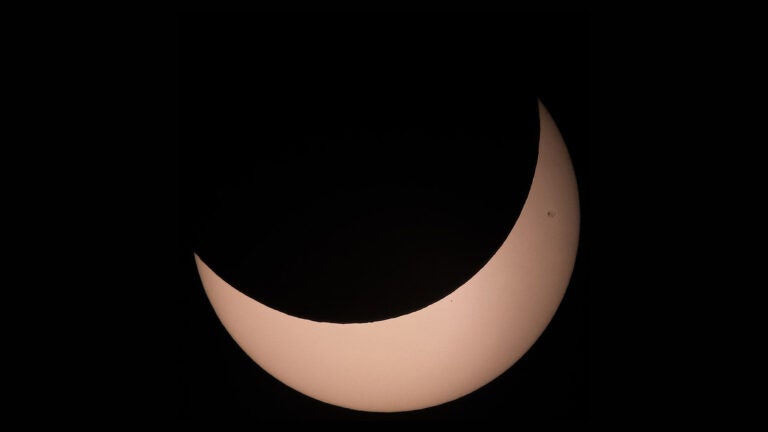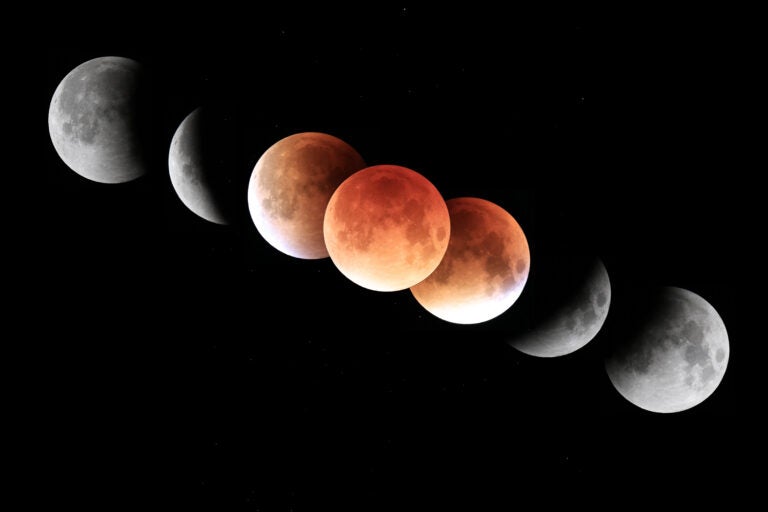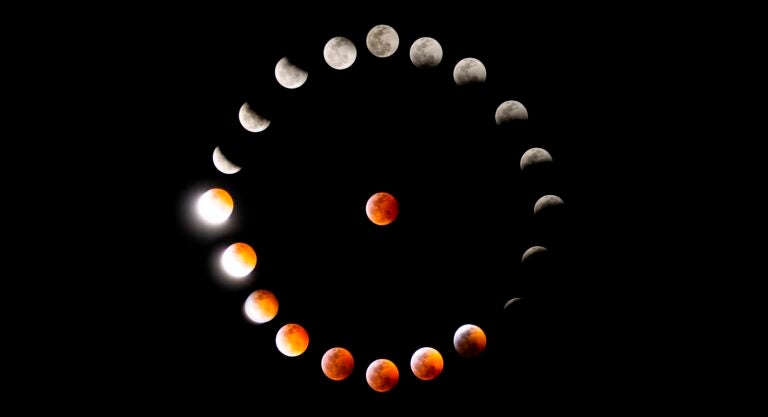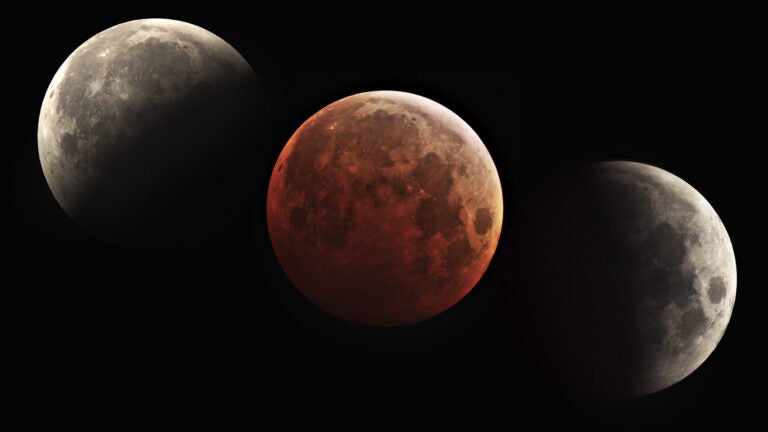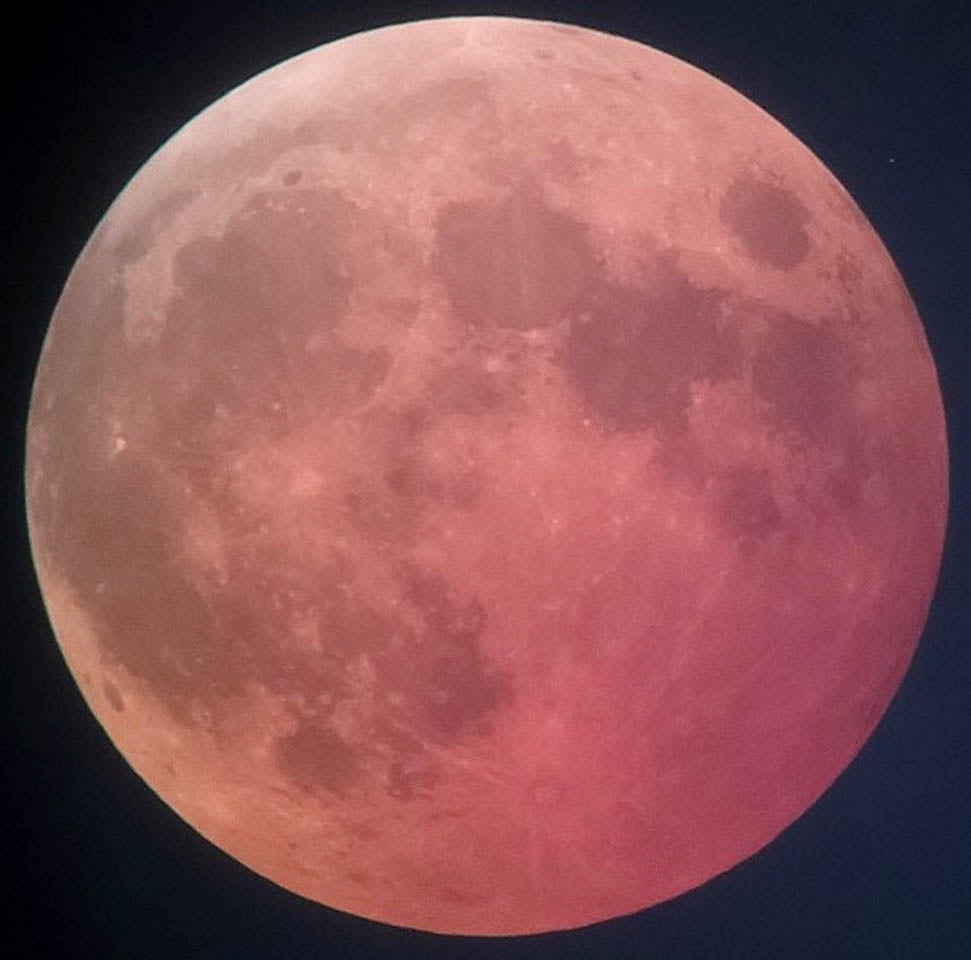
All lunar eclipses — whether penumbral, partial, or total — offer us thought-provoking views of Earth’s shadow. Frequently, lunar eclipses offer up peculiar color effects, with the shadowed Moon appearing reddish due to the state of Earth’s atmosphere. But the March 14, 2025, total lunar eclipse all but guarantees additional optical phenomena of a different kind, some of which could distort one’s perception of reality, even if momentarily.
Let’s start with the color effects. Take, for instance, the peculiar pink Moon that Brian Cudnik of Houston observed during the total lunar eclipse of Nov. 7/8, 2022. Cudnik captured the eclipse by holding his Samsung Galaxy up to the 41mm eyepiece of a Celestron 11 telescope. Of his image, he writes, “This … nicely approximates what I saw through the eyepiece — a pinkish tinge to the eclipse.”
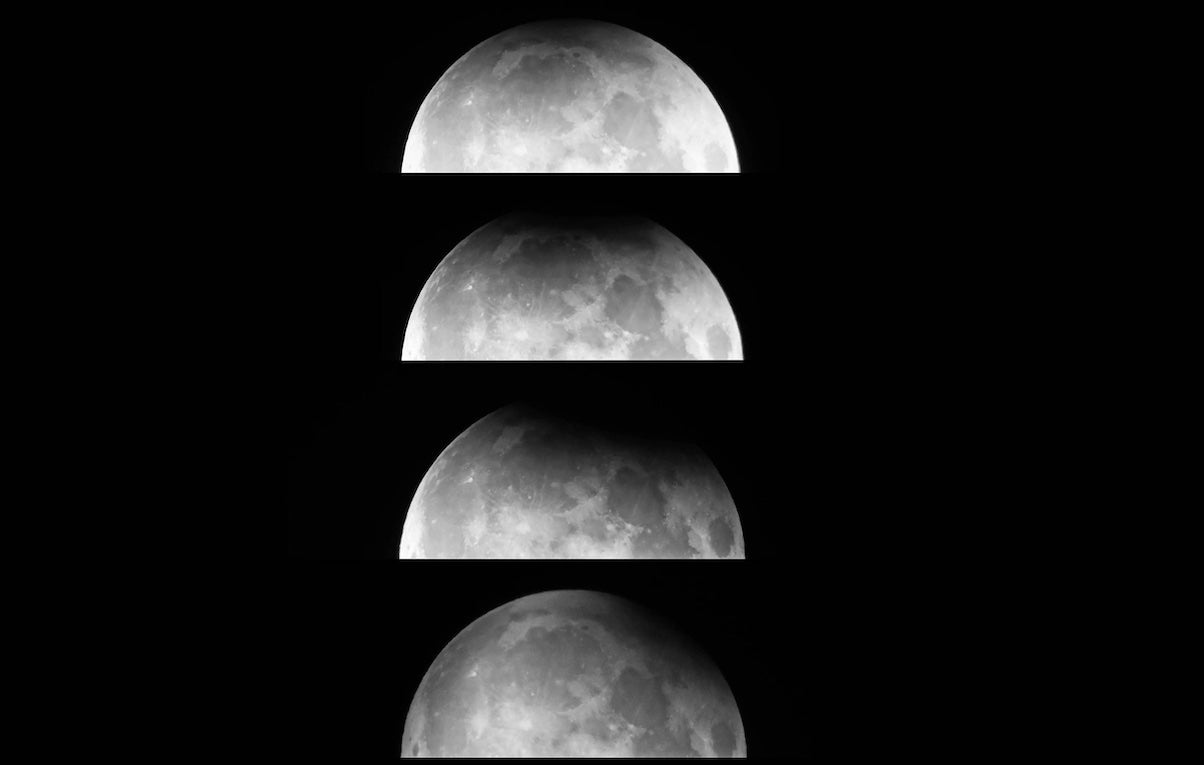
Cudnik noticed the coloring began around 15 minutes prior to totality and lasted until almost third umbral contact. However, through 20×80 binoculars and with unaided eyes, totality appeared more orange. Specific shades of pink can be made by mixing red/orange and white, so the apparent visual discrepancy between the telescopic view and the binocular/naked-eye view may simply be due to color mixing and image size. If you shrink Cudnik’s telescopic image of the pink Moon by looking at it from a distance, the Moon suddenly becomes more orange.
But the Moon’s morphing appearance isn’t just limited to changes in color. Another reader, Joe Bauman of Salt Lake City, wrote to say that during the May 26, 2021, total lunar eclipse, he observed illusory lunar canals, a phenomenon that was enhanced by passing clouds over the eclipsed Moon.
Bauman’s observation is reminiscent of a stunning visual effect visible during lunar eclipses. During the deep penumbral and umbral stages, the leading edge of Earth’s shadow may not appear curved but highly irregular. Lunar shapes may appear magnificently large or oddly detached. Some are small and patchy, others long and thin. It’s a visual illusion created by various optical effects as Earth’s curved shadow interacts with dark mare features on the Moon.
While we know intellectually that Earth’s shadow edge is curved, all manner of irregularities may appear only under certain conditions, such as the Moon entering the lunar disk at ingress, and depending on the intensity of the shadow (light or dark) and one’s visual perception. For example, the Sept. 17/18, 2024, partial lunar eclipse offered astounding visual illusions and shapeshifting effects. First, as Earth’s shadow entered the northern lunar limb, the tip of the curved edge bled into the long form of Mare Frigoris, causing the umbra to suddenly appear as if it had a mustache. The shadow then slipped into the northern reaches of Mare Imbrium, making the shadows appear like a maple leaf. Around that time, a pronounced reddening also appeared in Mare Imbrium. This may have been due to the color of Earth’s shadow, which was expected to turn red.
Nevertheless, I found it curious. One would expect the reddish coloration of the Earth’s shadow to be most pronounced over the bright lunar highlands. But the reddish-brown tone I saw was like an island of color in northern Mare Imbrium, appearing most prominent just south of the crater Plato. I suspect the reddish hue of Earth’s shadow somehow enhanced the soft and subtle reddish tone of this late-stage iron-rich section of mare basalt — where China’s Chang’e 5 lunar sampler mission landed.
After maximum eclipse (only 8 percent), the umbral shadow slipped eastward over Lacus Mortis and parts of Lacus Somniorum, creating more irregularities before exiting over the highlands east of Mare Frigoris, and making the last vestige of the umbral shadow appear like a tadpole with a long tail.
Now I’m interested to learn what you see during this month’s total eclipse, when the umbral shadow will sweep in from the east and pass over all the lunar mare. As always, let me know what you see or don’t see at sjomeara31@gmail.com.

